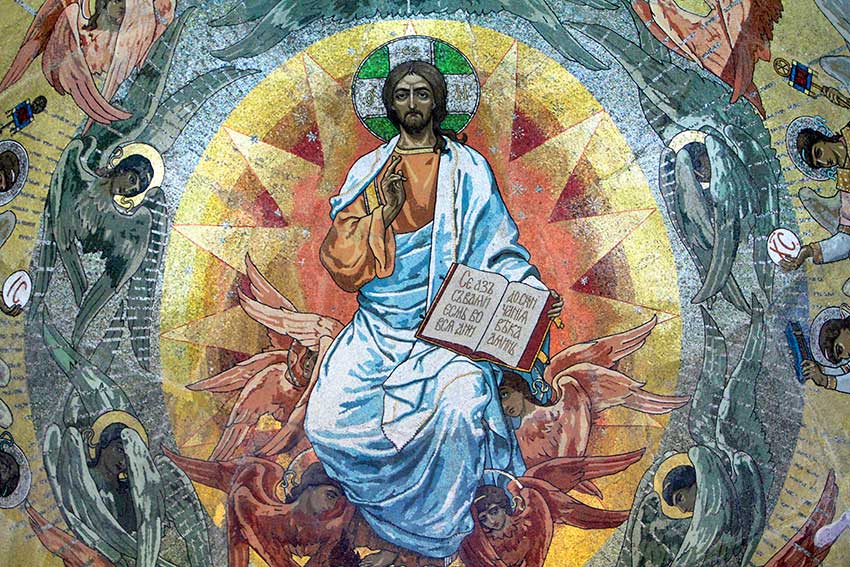
Dear Father, when our body is reunited with the soul at the end of the world, do we know anything about what it will be like?
As you imply, our body will be reunited with our soul at the end of the world. We express this truth in the Apostles’ Creed: “I believe in … the resurrection of the body.”
The first thing we should say is that there is a reason why God has ordained that the body should be reunited with the soul at the end of time. It is simply that it is of the very nature of the human person to have a body and a soul.
We are not like angels, who are pure spirits without a material body, nor like trees, which have a material body but no spiritual soul. Humans have both a body and a soul.
And the body and soul were made for each other. As St Thomas Aquinas puts it, the soul has an essential tendency, a potency, to inform a body (cf. STh, Suppl., q. 70, art. 1).
The soul was not meant to exist on its own without a body. It informs a body from the conception of the person until death, but then it exists on its own until the resurrection of the body, when it once again informs the body.
During this interval it is, as it were, crying out to be reunited with the body.
Okay, but what will this risen body be like when it is reunited with the soul? First, it will be the same body we have now. This is a dogma of faith.
The Fourth Lateran Council (1215) declared: “They will arise with their bodies which they have now” (D 429). The very word “resurrection” implies that it will be the same body we have now which will be resurrected.
Second, the body will be free from any defects it may have had on earth. St Thomas Aquinas teaches: “Man will rise again without any defect of human nature, because as God founded human nature without a defect, even so will he restore it without defect” (STh, Suppl., q. 81, art. 1).
That is, there will be no blindness, deafness, physical deformities, etc., in the risen body. In my book Dying to Live, there is an account of an elderly woman who had a near-death experience in which her soul hovered above her body, watching the efforts to resuscitate her.
After she was revived, she told one of the doctors how she had seen his pen fall out of his pocket and how he had gone over to pick it up near the window.
The doctor was amazed because this had in fact happened, but the woman had been unconscious throughout.
What was even more astonishing was that the woman was blind, yet her separated soul could see (cf. J. Flader, Dying to Live, Connor Court 2022, p. 31).
Following on from St Thomas’ teaching that the body will rise with the greatest natural perfection is his belief that it will rise in a youthful state.
He starts from Christ’s age when he rose from the dead to say: “Now Christ rose again of youthful age, which begins about the age of thirty years, as Augustine says (cf. City of God, 22). Therefore, others also will rise again of a youthful age” (STh, Suppl., q. 81, art. 1).
Let us be clear that this is not an official teaching of the church but rather the personal opinion of an eminent theologian. But it may very well be true.
As anecdotal evidence, in Dying to Live I relate how two people in different Australian states both told a man whose wife had died a year before at the age of 64 that they had seen a vision of her, looking very beautiful and in her late twenties (pp. 78-79).
Finally, the risen body will not be a physical body but a spiritual one. Perhaps this is a difficult concept to grasp.
We know what physical bodies are, because we all have one, but what on earth, or in heaven, is a spiritual body?
St Paul writes of it: “So it is with the resurrection of the dead. What is sown is perishable, what is raised is imperishable. It is sown in dishonor, it is raised in glory. It is sown in weakness, it is raised in power. It is sown a physical body, it is raised a spiritual body. If there is a physical body, there is also a spiritual body” (1 Cor 15:42-44).
When persons who have died and have later appeared on earth, like Our Lady, some saints, souls in purgatory and others, they always appear in a spiritual body, recognisable but spiritual.
This body, like that of the risen Christ, can suddenly appear and disappear, the person can speak in an intelligible way, etc.
In the end, we will have to wait until our own body rises at the end of time to know exactly what it will be like.
